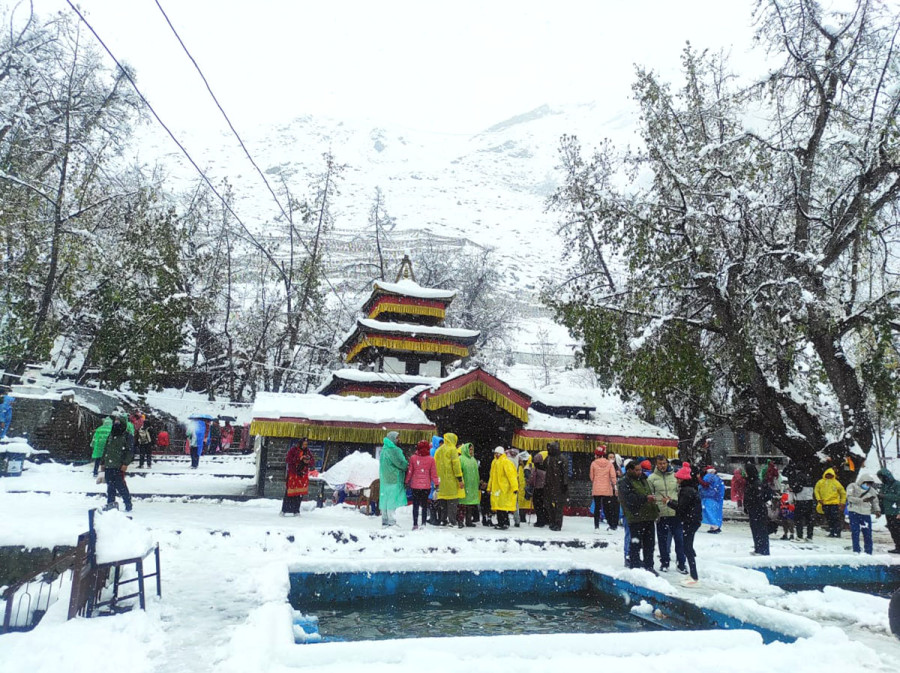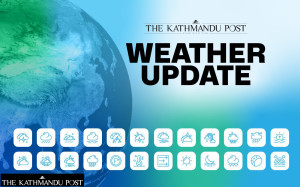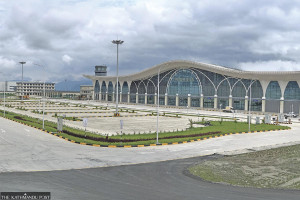Weather
Uplands brace for heavy snowfall. Tourists, farmers on alert
Cyclone Montha likely to cause heavy rain in Koshi and Madhesh provinces from tomorrow.
Arjun Poudel
Very heavy rainfall, similar to that during the Dashain festival in the first week of October, is most likely to occur again from Thursday, with Koshi and Madhesh provinces expected to be hit hardest, meteorologists have warned.
The intensity of ongoing rain and snowfall, triggered by westerly winds caused by a depression in the Arabian Sea—which has affected Karnali, Lumbini, Gandaki, Bagmati provinces and hilly areas of Koshi province—is expected to lessen from Wednesday. However, the effects of the cyclonic storm developed in the Bay of Bengal will start from Thursday, experts say.
“Cyclonic storm ‘Montha’, which is causing devastation in various parts of India, will also bring heavy rainfall to Nepal,” said Binod Pokharel, associate professor in the Central Department of Hydrology and Meteorology at Tribhuvan University. “Rainfall similar to the one we witnessed during Dashain festival is likely in Koshi and Madhesh provinces. Districts in Bagmati, including the Kathmandu Valley, will witness moderate rainfall after Thursday.”
Over 50 people died, scores were injured, and thousands were displaced due to floods and landslides triggered by torrential rains in the first week of October. Authorities then enforced restrictions on vehicular movements to prevent further mishaps.
Meteorologists say chances of landslides risks are especially high in Koshi province, which suffered devastation recently due to excessive rainfall.
“Commuters, trekkers, those planning for mountaineering must take weather warnings seriously. Farmers should postpone crop harvesting until Saturday.” said Madan Sigdel, who is also an associate professor at the Central Department of Hydrology and Meteorology under the Tribhuvan University. “Authorities also must take measures for saving lives and property.”
As the peak harvesting season for rice has started, farmers in most places across the country are busy collecting crops. Many farmers have already been affected by rainfall since Monday evening.
The Meteorological Forecasting Division said several mountainous districts—Dolpa, Gorkha, Solukhumbu, Manang Mustang—witnessed rain and snowfall. Some places are seeing heavy rain and snow.
According to the data provided by the met division, Chame station in Manang district witnessed 61.6mm of rainfall in the last 24 hours on Tuesday. Rainfall above 50 mm is considered heavy. Jomsom witnessed 52.8 mm of rainfall followed by 49.6 mm in Manaslu circuit trek, the northern Gorkha; 40.2 mm in Kyanging of Rasuwa; 33.2 mm in Mustang; 27 mm in Bhujung village of Lamjung; and Dhunge of Nuwakot recorded 23.6 mm of rainfall.
The Kathmandu Valley remained mostly cloudy the entire day on Tuesday, and many places witnessed light rainfall. People in the Valley were seen wearing jackets and warm clothes due to the chilling weather caused by light rain.
Since rainfall is still continuing, the amount of rain will increase further, officials say.
The chilling weather has not only disrupted daily life but also affected national as well as international tourists who are currently trekking.
According to Bishnu Prasad Bhatta, chairman of Barpak Sulikot Rural Municipality of Gorkha district, light rainfall started at around 7:30 on Tuesday morning and continued until evening, which increased cold. Small children and elderly people have been affected by the chilling weather conditions.
Meanwhile, the met division issued a special bulletin on Tuesday evening, alerting the public and agencies concerned about the looming adverse effects of Cyclone ‘Montha.’
The division, in its bulletin, stated that most places of Koshi and Madhesh, along with a few places of Bagmati province will witness moderate rainfall. “There is a chance of heavy rainfall in a few places of Koshi and Madhesh provinces,” reads the bulletin. “There is also a chance of light rainfall in eastern parts of Gandaki and Lumbini provinces.”
The met office said that few places in the mountainous regions of Bagmati and Koshi provinces could witness heavy snowfall during the same period.
Water flow in Bagmati, Koshi, Kamala, and Kankai rivers, and their tributaries, could increase significantly and reach alert thresholds. Likewise, there is a chance of sudden rises in small rivers that run through the Mahabharat and Chure ranges in Koshi, Bagmati and Madhesh provinces.
There is also a high chance of sudden increases in water levels of small rivers in the Kathmandu Valley, Kavrepalanchok, Sindhupalchok, Dolakha, Makawanpur, Chitwan and Sindhuli of Bagmati province; Bara, Parsa, Sarlahi, Rautahat, Mahottari, Dhanusha, and Saptari of Madhesh province; and Sankhuwasabha, Taplejung, Panchthar, Terhathum, Bhojpur, Dhankuta, Ilam, Jhapa, Morang and Sunsari of the Koshi province.
Nepal is one of the world’s most vulnerable countries to the climate crisis and has witnessed extreme weather events over the past decade and a half. The weather has turned more unusual and destructive in the past couple of years.
Evidence suggests that the maximum temperature in Nepal is rising at a faster rate (0.056 degrees Celsius per year) than the global average of 0.03 degrees Celsius per year.
Experts say extreme weather events—excessive rainfall in a short period, continuous rains for several days after the monsoon, dry spells, droughts, below-average precipitation, and above-normal winter temperatures—have become more frequent in recent years.




 16.12°C Kathmandu
16.12°C Kathmandu






